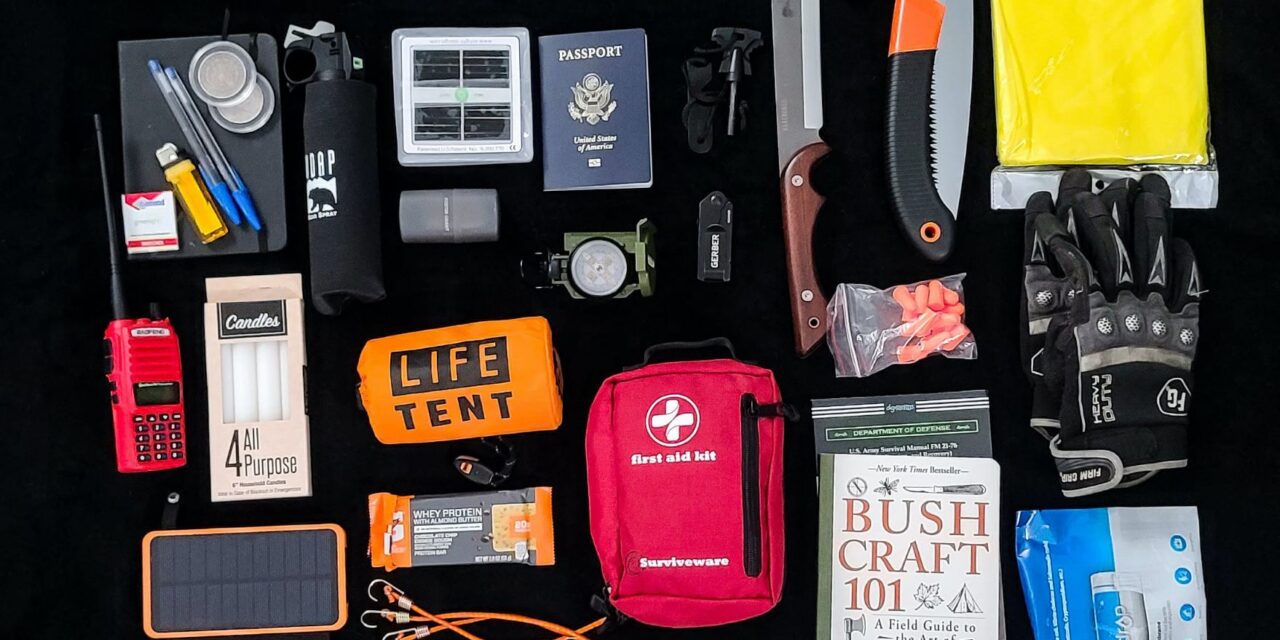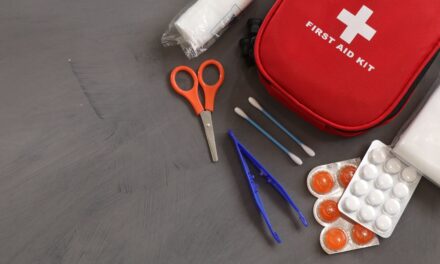Introduction to the Ultimate Survival Kit
In a world where uncertainty often looms around the corner, the importance of being prepared for any situation cannot be overstated. Whether you’re an avid adventurer, a seasoned camper, or simply someone who values safety and preparedness, understanding the components of an ultimate survival kit is crucial. In this comprehensive guide, we delve into the essentials of creating a survival kit that not only meets basic needs but also equips you for unforeseen circumstances.
At the heart of survival is the ability to adapt, and a well-prepared kit is your first line of defense against the unexpected. The concept of a survival kit is not new, but the approach to assembling one has evolved significantly. Today, a survival kit is more than just a collection of items; it’s a manifestation of forethought, practicality, and adaptability. We’ll explore the significance of each item, offering insights into how they can be utilized in various scenarios.
But what makes a survival kit “ultimate”? It’s not just about having more items; it’s about having the right items. Items that are versatile, durable, and reliable. Your kit should reflect your environment, your skill level, and the specific challenges you might face. Whether it’s navigating through the wilderness, enduring a natural disaster, or managing an unexpected emergency at home, your ultimate survival kit should be your go-to resource.
Now, let’s break down the components of an ultimate survival kit. You might think of the obvious items like food, water, and shelter, but there’s much more to consider. We’ll explore each category, from the essentials to the often-overlooked, ensuring that you’re equipped not just to survive, but to thrive in any situation. Let’s embark on this journey to not only understand what goes into an ultimate survival kit but also to appreciate the wisdom and preparedness that comes with it.
Remember, the ultimate survival kit is not a static entity; it evolves with your experiences, environment, and needs. The kit you assemble today might look different a year from now, and that’s a good thing. It reflects growth in your survival knowledge and adaptability to new challenges. So, let’s dive into the essentials, the considerations, and the practical tips to create your very own ultimate survival kit.
Throughout this guide, we’ll also touch upon the latest research and expert insights, ensuring that your survival kit is not only comprehensive but also aligns with the best practices in the field of survival and preparedness. Stay with us as we explore the intricacies of building a survival kit that stands the test of time and unpredictability.
To start with, let’s look at the fundamental categories of items that should be included in every ultimate survival kit. These categories form the backbone of your kit, and understanding them is the first step in your preparedness journey. In the following sections, we’ll delve into each category, offering detailed insights and practical advice on selecting the right items for your unique needs.
Ready to begin? Let’s embark on this journey towards ultimate preparedness and resilience. Your ultimate survival kit is more than just a bag of tools; it’s your lifeline in a world of unpredictability. Embrace this guide as your first step toward mastering the art of survival.
Detailed Insights into Ultimate Survival Kit Components
Core Elements of a Survival Kit
The foundation of any ultimate survival kit lies in addressing the basic human needs: water, food, shelter, and safety. Let’s explore each of these essential components.
Water: The Lifeline in Survival Situations
Water is paramount for survival, with the human body requiring it for virtually every function. In your kit, include a reliable water filtration system, such as a portable filter or purification tablets. These are vital for accessing clean water from natural sources. Additionally, a durable water bottle or hydration bladder is essential for storing and carrying water.
Food: Sustenance for Energy and Nutrition
Next, consider food that is non-perishable, lightweight, and high in energy. Energy bars, dried fruits, nuts, and freeze-dried meals are excellent choices. They provide the necessary calories and nutrients without adding significant weight to your kit.
Shelter: Protection Against the Elements
For shelter, include items like a lightweight tent, emergency bivy, or a tarp. These can provide protection from wind, rain, and cold. A compact sleeping bag or space blanket is also critical for maintaining body heat in colder environments.
Safety and First Aid: Preparing for Injuries and Health Issues
A well-stocked first aid kit is a must. It should include bandages, antiseptic wipes, pain relievers, and any personal medications. Additionally, consider tools like a multi-tool or Swiss Army knife, which can be invaluable for various tasks.
Secondary Essentials: Enhancing Survival Capabilities
Beyond the core elements, there are secondary essentials that can significantly enhance your survival capabilities.
Navigation Tools
A reliable compass and detailed maps of your area are indispensable for navigation, especially in unfamiliar terrain. In today’s digital age, a GPS device can also be beneficial, but remember that it should not be solely relied upon, as batteries can fail.
Fire Starting Tools
Fire is essential for warmth, cooking, and signaling for help. Include multiple means of starting a fire, such as waterproof matches, lighters, and a firesteel. It’s also wise to have tinder or fire-starting aids in case natural materials are wet or unavailable.
Communication Devices
In an emergency, being able to communicate with the outside world can be a lifesaver. A whistle for signaling, a mirror for visual signals, and a battery-powered or hand-crank radio are all valuable additions. If possible, include a satellite phone or a personal locator beacon for emergencies where cell service is unavailable.
Customizing Your Kit
While these items form the basis of an ultimate survival kit, customization is key. Consider your environment, the likely scenarios you might face, and your personal skills when choosing items for your kit. For instance, if you’re in an area prone to natural disasters like earthquakes or hurricanes, tailor your kit to address those specific challenges.
Remember, the ultimate survival kit is a dynamic entity. Regularly review and update your kit, ensuring that all items are in working order and that you’re prepared for any changes in your situation or environment.
In the next section, we’ll summarize the key takeaways and provide final thoughts on building and maintaining your ultimate survival kit.
Summary and Key Takeaways: Your Path to Ultimate Preparedness
Recap of the Ultimate Survival Kit Essentials
We’ve journeyed through the detailed components of an ultimate survival kit, emphasizing the importance of being prepared for any situation. Let’s recap the key elements:
- Water and Food: Ensure you have the means to purify water and a selection of non-perishable, energy-rich foods.
- Shelter and Warmth: Items like a lightweight tent, emergency bivy, or a tarp, along with a sleeping bag or space blanket, are crucial.
- Safety and First Aid: A comprehensive first aid kit and multipurpose tools are indispensable.
- Navigation and Communication: Equip yourself with a compass, maps, and devices for signaling and communication.
- Fire Starting Tools: Multiple fire-starting methods are essential for warmth and cooking.
Customization and Maintenance: Tailoring Your Kit
Your ultimate survival kit should be as unique as your needs and environment. Regularly update your kit, consider seasonal changes, and include personal items like medications. Keep in mind that skills are just as important as the kit itself. Regular practice and familiarity with your gear are crucial.
Final Thoughts: Embracing Preparedness as a Lifestyle
Preparing an ultimate survival kit is not just about assembling items; it’s about adopting a mindset of readiness. It’s a continuous process of learning, adapting, and being proactive about your safety and well-being. Whether you’re an experienced survivalist or just starting, the journey towards ultimate preparedness is ongoing and rewarding.
Remember, the best survival kit is the one that suits your specific needs and situations. It’s a personal toolkit that evolves with you, offering peace of mind and confidence in facing any challenge. So, embrace this guide as a starting point and continue to build on your knowledge and skills. Your path to ultimate preparedness is unique and invaluable.
In conclusion, your ultimate survival kit is a symbol of your commitment to safety and preparedness. It’s a reflection of your willingness to face challenges head-on and your ability to adapt to any situation. Keep refining your kit, enhancing your skills, and stay prepared for whatever life throws your way.








